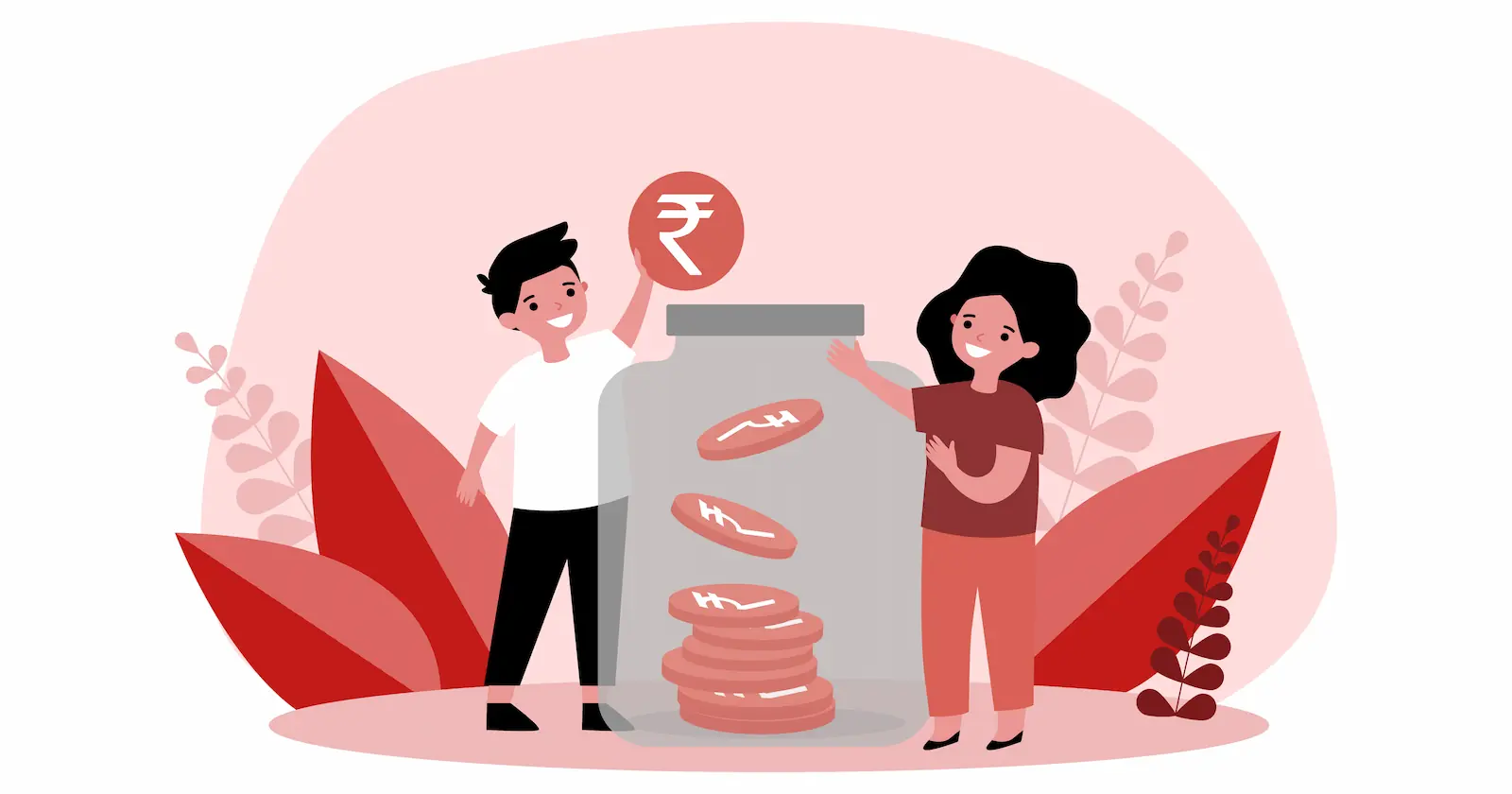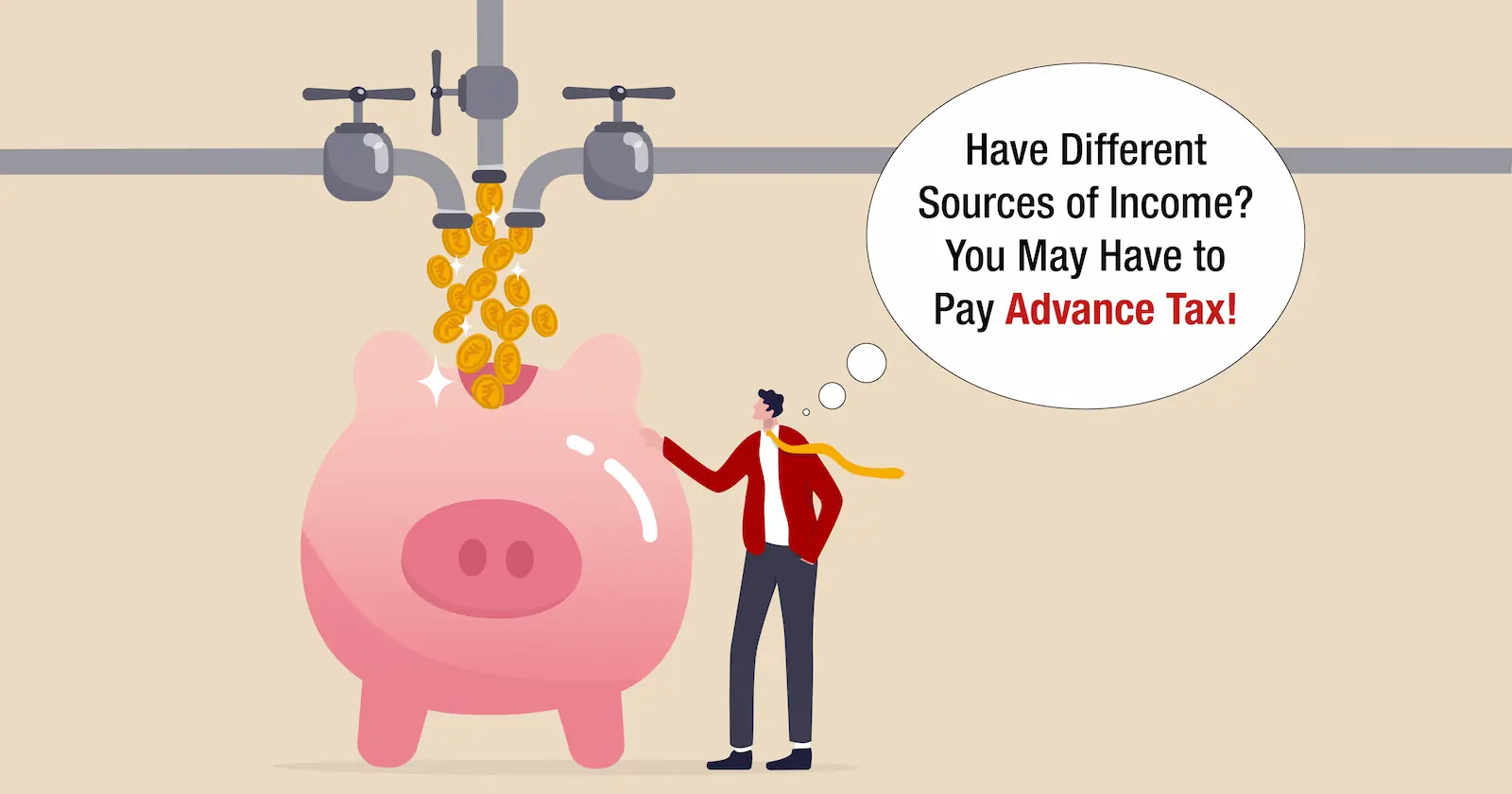After your children's health, their education is your primary concern as a parent. You are motivated to work harder each day because you want to provide your child with a high-quality education.
However, parents are now facing a huge financial strain due to the annual increase in the expense of schooling with each passing year, merely saving money in a savings account may not cover the educational expenses you incur. In addition, the taxpayer's axe on your income can further affect your savings.
In this situation you need a smart investment plan. This can enable you to meet your children's educational ambitions as well as save tax.
Fortunately, the Indian government has made provisions under the Income Tax Act, 1961 to reduce the strain on taxpayers. These provisions allow parents to deduct the costs of their children's education under several parts of the Income Tax Act.
In this article, we will got to know in detail on the many tax benefits are available to parents who are paying for their children's education:
1. Educational Allowances as per Section 10(14) of the Income Tax Act, 1961
According to Section 10(14) of the 1961 Income Tax Act, special allowances are provided to salaried people in order to help them pay for their children's education costs and housing costs.
| Allowance | Exemption Limit |
|---|---|
|
Children Education Allowance |
₹ 100 per month per child up to a maximum of 2 children. (This gives you a maximum exemption of ₹2,400.) |
|
Children Hostel Allowance |
₹ 300 per month per child up to a maximum of 2 children. (This gives you a maximum exemption of ₹7,200.) |
With both of these tax benefits at your hands, you can lessen the impact of financial burden of your children's education fees by up to ₹ 1,59,600(₹ 1,50,000 under Section 80C, ₹2,400 for children’s education allowance, and ₹7,200 for children’s hostel allowance).
Note:
- You can claim this allowance only in the financial year in which the quoted Educational Fee was actually paid.
- The given allowance is provided to a person employed in India only.
- The allowance is provided only when expenses are incurred within India in accordance with Section 10(14) Income Tax Act 1961.
- The Allowances are subject to change as per any future amendments in the Income Tax Act, 1961.
Types of Fee reimbursable under Section 10(14)
According to OM No. 12011/03/2008-Estt(AL) which is dated at 2.9.2008, the following are different types of fees that are eligible for reimbursement:
- Tuition Fee
- Admission Fee
- Special Fee charged for electronics, music, or any other subject
- Practical Fee
- The fee that is paid for the use of any appliances or any form of aid.
- Library Fee
- Game/sports fee
- Fee for extra curricular activities
- Other related fee charges
But it's important to remember that the school should bill the student directly for the above-mentioned fees.
No reimbursement is permissible for annual charges and transportation fees. Reimbursement of school bags, pens/pencils, water bottle, stationery etc., may not be allowed.
In addition to the above mentioned fees, there are allowances available for the purchase of specific educational necessities, such as:
- For the current academic year, only one set of textbooks and notebooks that are required.
- Two sets of uniforms that the school has asked for. Uniform include all items of clothing prescribed for a day, as uniform by the school, irrespective of colours/winter/summer/PT uniform.
- One pair of shoes.
Within a single academic year, all of the above-mentioned expenses are reimbursable.
Children's Eligibility Requirements for Tax Reimbursement
The following conditions must be met by children in order to be eligible for tax reimbursement:
There is no minimum age prescribed for reimbursement of CEA in respect of children admitted in nursery classes. However, with regard to physically challenged children the minimum age of 5 (five) years was prescribed for disabled children undergoing non formal/ vocational education. With effect from 21' February, 2012, the minimum age stipulated as 5 years for disabled children stand removed.
Hence, there is no minimum age of child for whom reimbursement is claimed irrespective of the fact whether the child is disabled or not. The maximum age for normal child is 20 years and for physically challenged children the maximum age is 22 years.
Note: All of the above-mentioned information is in accordance with the information according to O.M. No.12011/07(ii)/2011-Estt. (AL) as dated on 21.02.2012.
Eligibility for the institution your child is attending or for school
The school/institution has to be recognized by the Central or State Government or UT administration or by University or a recognized educational authority having jurisdiction over the area where the institution is situated. This also applies in respect of children studying in two classes prior to Class-I, i.e., nursery/LKG/UKG, etc. OM No. 12011/03/ 2008-Estt.(AL) dated 23.11.2009.
2. Children's Educational Allowance for Central Government Employees
"Central Government employees," including "Nepali and Bhutanese citizens who are employed by the Government of India, and whose children are studying abroad," are eligible to receive the Children Education Allowance for their children. However, there is a requirement for a certificate from the Indian Mission in that nation attesting to the fact that this educational institution has been approved by the educational organisation with jurisdiction over the region in which it is located.
Hostel Subsidy would allow expenses incurred by the Government servant if he/she keeps his/her children in a hostel of a residential school/institution located beyond a distance of 50 kilometers from his/her residence.
Hostel Subsidy is reimbursable to all Central Government Employees covered by the scheme, for keeping their ward in the Hostel of a residential school away from the station in which the employee is posted or residing irrespective of any transfer liability.
Hostel subsidy includes fee charged for boarding, lodging in addition to fee as mentioned in para1(e) of OM No. 12011/03/ 2008-Estt.(AL) dated 2.9.2008.
3. For Your Young Daughter Invest in Sukanya Samriddhi Yojna
To promote saving for the future of girl children, the government introduced the Sukanya Samriddhi Yojana in 2015 as a part of the Beti Bachao Beti Padhao campaign. It is a fixed income investment that allows users to make consistent payments and collect interest. In addition, Section 80C of the Income Tax Act allows you to deduct up to Section 1.50 lakh from your taxable income for contributions you make to the Sukanya Samriddhi programme.
Overall, the Sukanya Samriddhi Yojana aids in addressing the three major issues:
- The safety of your girl child's financial future
- Encompassing tax savings
- The greater interest rate compared to other similar saving plans
You can open a Sukanya Samriddhi account for your daughter by visiting a post office or any authorised bank branch that offers this scheme. You will have to fill up the application form and submit it along with the following documents:
- An account opening form duly filled in
- Birth certificate of the girl child.
- ID and address proofs of the depositor.
- Medical certificates as proof of birth of multiple girl children at once.
- Any other document as requested by the bank or post office.
- You will have to make an initial investment of at least ₹1,000 through cash, cheque, demand draft or online payment.
Features of Sukanya Samriddhi Yojana Account
When it comes to financial problems, it is essential to consider how a certain choice will turn out in the long run. As a result, prior to deciding to invest money in a particular investment, it is crucial to understand its characteristics.
- Eligibility – Any person who has a girl child can opt for Sukanya Samriddhi Yojana after the birth of the girl child but before she turns 10th year in age.
- Interest rate - The interest rate for the Sukanya Samriddhi Yojana is set by the government every three months. The interest rate is 7.6 percent yearly, calculated, for the quarter ending March 2022. Only at maturity or in the event that your daughter's citizenship or place of residence changes is the interest payable.
- Lock-in period - The Sukanya Samriddhi Yojana has a lock-in duration of 21 years from the date of opening or till the marriage of the girl. For instance, if the account is started when the girl is 5 years old, it will achieve maturity when she is 26 years of age.
- Deposits: For 15 years, a minimum deposit of ₹ 250 must be made. The most that may be invested in a fiscal year is ₹ 1.50 lakh. Cash, check, demand draught, or internet transfer are all acceptable payment methods for deposits that are made in multiples of 100. Any amount of deposits may be made during a calendar year. However, your account will be closed if you don't make the required minimum investment in a given year. However, you can reactivate the account by paying the minimum deposit amount and paying the specified nominal penalty.
- Transfer of accounts: If you move, you can transfer your Sukanya Samriddhi account balance for free to any post office or bank branch nationwide, or from a post office to a bank, if you alter your address. In this situation, you must provide verification of your address. For transfers made in any other situation, there will be a nominal transfer cost.
Number of accounts: In a household, a maximum of two accounts may be opened, and only one account may be owned for a single girl kid. If you have triplets (all girls) or if your first child is a girl and you subsequently have twin female infants, you can open more than two accounts.
Eligibility Criteria to Open Sukanya Samriddhi Yojana Account
The requirements to open a Sukanya Samriddhi Yojana Account are simple. They are as follows:
Eligibility Criteria for the Nominee (that is the girl child)
- This programme only provides benefits to girl children.
- A grace period of one year is permitted, however the girl child cannot be older than 10 years old. As a result, you can open a bank account for your daughter within a year of her turning ten.
- You must provide age verification documentation for your daughter.
Eligibility requirements for persons opening and running the account
- Only if you are your daughter's biological or legal parent or guardian are you eligible to open an account on her behalf.
- A maximum of two accounts may be opened by each parent or legal guardian.
Tax Benefits of Sukanya Samriddhi Yojana
Investments into Sukanya Samriddhi Scheme are eligible for tax deductions under section 80C. Under the scheme, if you have a girl child below ten years of age, you can put aside some money in the form of a financial gift. The investment would earn similar interest just like PPF, and the wealth created would exclusively help your daughter achieve her financial goals.
Along with EPF, PPF and ELSS, your long-term investments under Sukanya Samriddhi Yojana are eligible for EEE (Exemption- Exemption- Exemption) tax deduction status. As a result, your contribution into the scheme, any interest earned on the investments and the maturity amount, are all safe from taxation. To better understand how the scheme works, let us consider an example. You contributed Rs 1.2 lakh into your daughter’s Sukanya Samriddhi Account during a given financial year.
At the end of the year, you can mention this contribution while filing your tax returns and the amount would get subtracted from your taxable income under Section 80C.
4. Invest in a ULIPs dedicated to your child’s education
Unit Linked Insurance Plans, also known as ULIPs, are a type of life insurance that is eligible for tax benefits under Section 80C of the Income Tax Act. By investing in this programme, you can receive annual tax benefits of up to Rs 1.5 lakh. When compared to alternative investing possibilities, a ULIP is a useful instrument for tax savings as well as wealth building. This is due to the fact that it has a shorter lock-in period of five years, which promotes disciplined saving.
The fact that ULIPs provide the benefit of long-term capital growth is their main advantage. With the long-term objective of paying for your child's education, you may want to think about investing in ULIPs through Future Generali India Life Insurance.
5. Tax Deduction on Tuition Fees under Section 80C
A second tax deduction can be claimed on the tuition fees parents pay for their children's education in addition to the cost of their education.
Any tuition fees paid to an Indian-based registered school, college, or university that were paid at the time of admission or at any other time are included in this deduction. Under Section 80C of the Income Tax Act, this tax deduction may be utilised for the full-time pursuit of education. It should be emphasised that both salaried employees and independent contractors are eligible for this tax deduction benefit.
Note: In addition to tuition fees, a variety of assets, up to a total of Rs. 1.5 lakh, are eligible for tax deductions under Section 80C of the Income Tax Act. These investments include life insurance premiums, Public Provident Funds, mutual funds, etc.
Eligibility for Tuition Fee Tax Deduction under Section 80C
The following qualifying requirements must be met by tax-paying persons in order to be eligible for a Section 80C tax deduction on tuition fees:
- Only Individual Taxpayers -Only individual taxpayers are allowed. Neither HUFs (Hindu Undivided Families) nor corporations, are eligible to claim this tax deduction.
- Limit: Only two children per taxpayer are eligible for deductions under Section 80C of the Income Tax Act of 1961, which has a maximum allowable limit of Rs. 1.5 lakh. If both parents are taxpayers, they may deduct up to 4 children from their taxes. A single taxpayer is only permitted to claim up to two children.
- Child Education Only: You may claim a tax deduction solely for the purpose of educating your children. No deductions may be made for the cost of educating anyone else, including spouses and the individual themselves. Deduction is not available towards payment made for school fees of self, spouse, brother or sister, father or mother or any other relative.
- Full Time Courses Only: Only full-time courses, whether for school, graduation, or post-graduate, are eligible for a tax deduction for tuition. It is not possible to deduct the fee paid for part-time schooling.
- Affiliated Institution: The school, college, or university where the child is enrolled should be affiliated with the appropriate educational body.
Educational Expenses that cannot be claimed under Tax Deduction
The following educational expenses cannot be claimed under tax deductions:
- Costs other than tuition, such as donation charges, development fees, private coaching fees, dorm fees, mess fees, library fees, and so on, cannot be deducted from your income for tax purposes.
- The cost of tuition for part-time studies cannot be deducted from taxes.
- School expenses paid for a spouse, oneself, a brother, sister, mother, or any other relative besides children cannot be deducted from one's taxes.
- This deduction does not apply to any fees paid to foreign institutions for the education of children.
How to Claim the tax benefit on Tuition Fee paid for Children?
The actions below will help you claim your tax benefit. There are a number of steps you must take in order to claim tax benefits on tuition fees.
- Send the employer a copy of the receipt the educational institution issued for the payment you paid during the current fiscal year.
- In order to present the proof at the conclusion of the fiscal year, you must first show the Tuition Fee paid in form 12BB.
- When claiming the deduction under VI-A schedule on behalf of anyone who is not receiving a salary, they must provide proof of the section 80C fee they were required to pay.
Note: It should be noted that the Tax Deduction for Tuition Fee under Section 80C and the Educational Fee Allowance under Section 10(14) are two separate provisions that can be claimed within the parameters established by The Income Tax Act, 1961.
Information about Form 12BB and VI-A Schedule
- A statement of claims for a tax deduction made by an employee is made on Form 12BB.
- A self-employed individual must adhere to schedule VI-A and claim tuition fee tax deduction under Section 80C of The Income Tax Act, 1961, but a salaried employee must complete form 12BB and submit it to the employer for a Tax deduction before claiming it at the end of the financial year.
- The same forms, Form 12BB and VI-A schedule, are used to deduct tuition fees from income.
Conclusions
If you work for a government-recognized company, you may be eligible for the Children's Educational Allowance under Section 10(14) of the Income Tax Act of 1961 and the Tuition Fee Tax Deduction under Section 80C. You should be eligible for both in order to maximize your benefits. While the tax deduction can help you save money during your child's formative years of education, don't forget to also create a long-term strategy for higher education.
You could choose to seek out expert financial counsel if you require more help outlining a clear investing plan. This might assist you in making investments and saving money for your kids' educational goals.





Comments